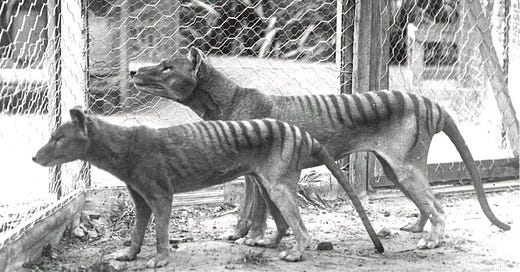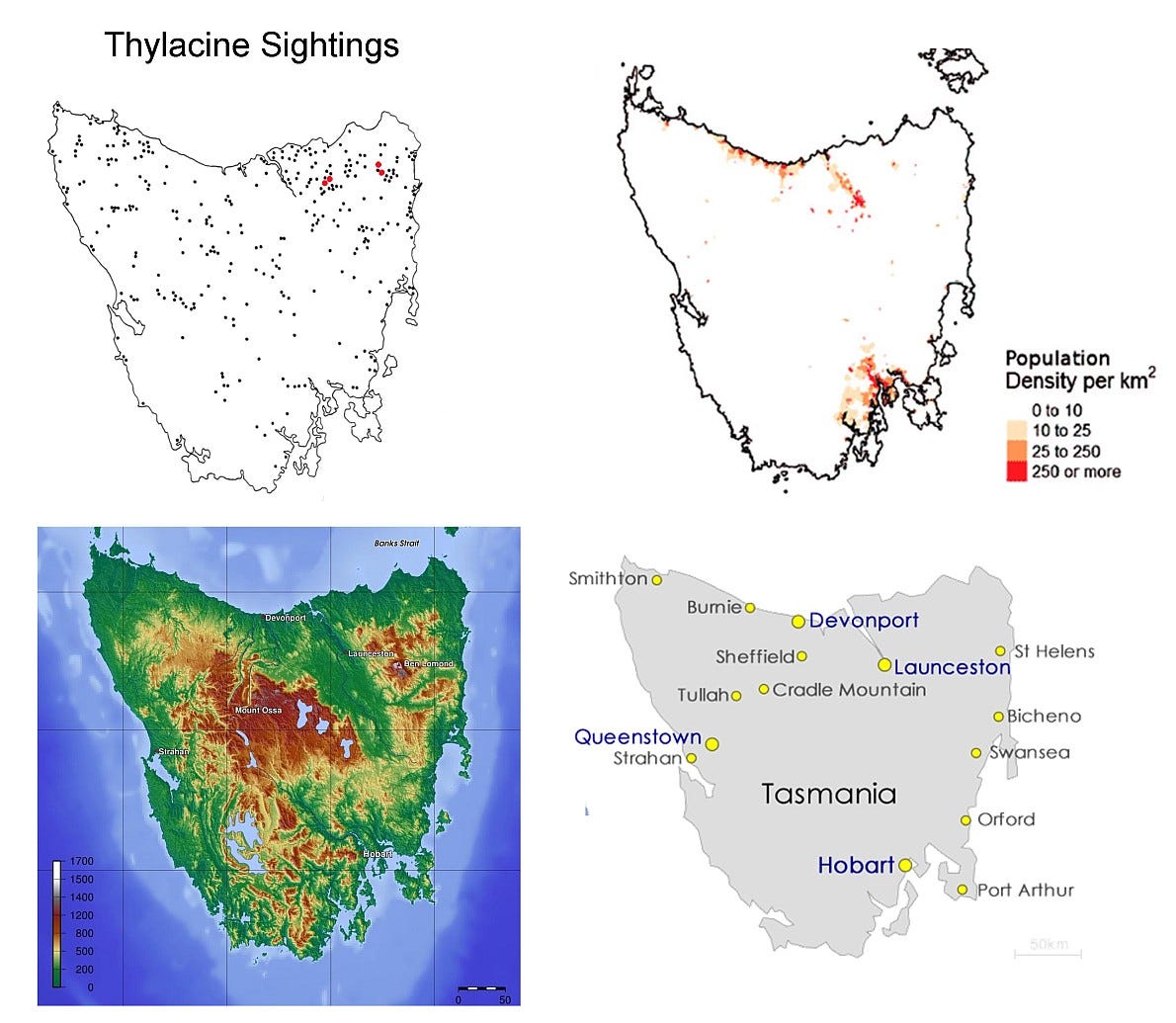The Thylacine aka Tasmanian Tiger is Probably Still Around in Tasmania
Here is another post that I have wanted to write for almost three years, but somehow never got around to completing.. until now. I am sure that some of you have heard about the Thylacine aka Tasmanian Tiger, most likely in the context of whether it could be brought back through the use of cloning or it is truly extinct. So what is the deal with this allegedly extinct animal and why do more than a few people believe it is still around. The real reason why we are talking about this creature in the first place has a lot to do with mammalian evolution during the Cenozoic, plate tectonics and the final breakup of the remnants of Gondwana about 30-40 million years ago.
After the extinction of non-avian dinosaurs at the end of Cretaceous, the survivors (especially on land) were on the smaller side. As some of you might know, the two main surviving branches of mammals after that event were the Placentals and Marsupials. Today, the former dominate most ecosystems on earth- but things were not always so lopsided. For reasons that are speculative and beyond the scope of this post, the three southernmost continents (Antarctica, Australia, South America) and what is today New Zealand were dominated by birds, marsupials, amphibians and some rather usual reptiles until they either came in contact with other continents or became too cold to support most animal and plant life.
Long story short.. for many millions of years after its final separation from Antarctica and perhaps even before that event, the largest land animals in Australia were marsupials, birds, crocodiles and monitor lizards. Marsupials were especially versatile and evolved into creatures that occupied familiar ecological niches. To put it another way, Australia used to have marsupial versions of common placental mammals such as anteaters, moles, rabbits, squirrels, deer, rhinos, pigs and big cats. While usually not as large or diverse as their placental counterparts, these creatures nonetheless managed to hang around for tens of millions of years- with many becoming extinct only in the past 10-40 thousand years or less.
The Thylacine, despite its name, is best understood as the marsupial equivalent of a small wolf or coyote. Fossil evidence suggests that it was once found in Australia, New Guinea and Tasmania- because these three entities are on the same continental plates and connected by land bridges during geological periods characterized by lower sea levels. While it was almost extinct on the Australian mainland by the time it was colonized by the British in the mid-1800s (competition from dingos?), a reasonably decent sized population persisted in Tasmania- which has been a separate island since the end of last ice age. It would have been still flourishing on that island if not for stupid short-sighted white colonial farmers who saw this creature as a pest and hunted it to alleged extinction. But why use the words "alleged extinction" instead of "extinction". But why use the words "alleged extinction" instead of "extinction".
Because there is a lot of evidence to suggest that it did not become extinct. Officially, the last Thylacine in captivity died on 7 September 1936. There have been very credible sightings of this species in 1938 (shot in a remote area), 1957 (spotted from air) and 1961 (killed in another remote area). While there are no photographs of these sightings, the fact that those involved in them came from an era when people had seen Thylacines in the flesh make misidentification unlikely. Now let us move on to sightings of this animal in the post-1961 era. Before we go any further, let us make an important distinction between post-1961 sightings based on location.
All recent Thylacine sightings can be divided into two categories based on location. One set are concentrated in a remote coastal part of South-West Australian mainland and yes.. early colonists in the mid 1800s had reported very occasional encounters with these creatures. My point is that the idea of a few small populations of that species surviving in remote areas of the mainland is not as implausible as one might initially assume. Having said that, the case for them being around in Tasmania is far stronger. But why would I think so?
Tasmania is a reasonably large island (almost as large as Sri Lanka, Hispaniola or Hokkaido) and most of it is very sparsely populated. Over 70% of 530-540k people on that island live in five metropolitan areas with two accounting for over 50%. This is another way of saying that many parts of the island are pretty wild and seldom visited by human beings. You might have also noticed that a decent percentage of the island is mountainous/ hilly and not close to large population centers. Not to mention that 20% of that island is a national park containing some of least disturbed parts of that island. It is therefore not beyond the realms of possibility for small populations of a shy coyote-sized animal which is especially wary of humans to remain largely hidden from them. Remember.. the Thylacine was never known for being especially fecund or interested in approaching human beings. So yes, it is possible.
It is also noteworthy that post-1961 locations of alleged Thylacine sightings tend to cluster in certain areas of that island, with a rather large percentage occurring in or near the foothills in remote parts of that island- which is about where you might expect such a reclusive species to come across humans. To summarize, it is likely that small isolated populations of the Thylacine are still around in Tasmania. This conclusion is based on number of converging factors such as the number and geographical distribution of sightings, relatively small size and reclusive nature of animal, large amount of almost uninhabited area with enough food and moderate to heavy forest cover for hiding as well as the hilly terrain in interior of Tasmania.
What do you think? Comments?





